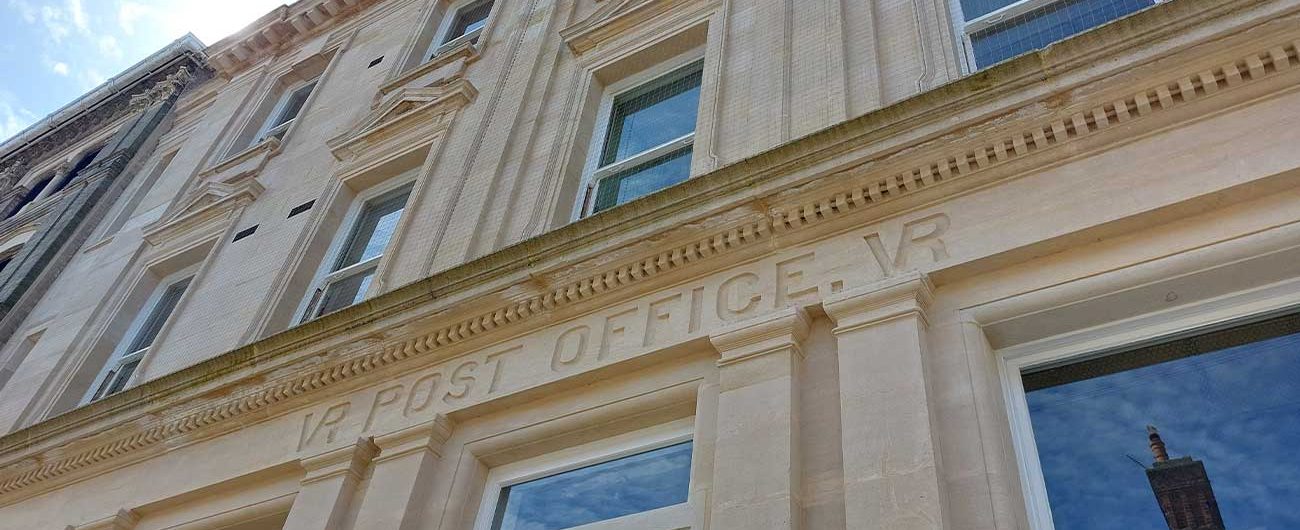
Lowestoft Post Office
R G Carter are delighted to have worked at the former 1880’s built Post Office at Lowestoft, a restoration project to bring it back to its former glory.
Works on this Grade II listed building included fixing the slate roof, repairing the sash windows, carrying out conservation of stonework on the façade and reconfiguring the ground floor windows to restore the entrance to the central bay of the building, as per the original design of the building. To aid this a fully clad scaffold and temporary roof was erected to the full building on the busy high street area with very limited access.
The team had to set about fully stripping the sarking board to allow the replacement of wall plates, with new rafters added and any salvaged ones reinstated where possible.
The stone façade consisting of 3 different types of stone was carefully steam cleaned using a Thermatec system which uses extremely high temperatures to kill the lichen and algae growth without using a biocide by heritage specialists Aldis and May.
Where possible mortar repairs were carried out to existing stonework, some areas required indent repairs and others required complete replacements which were assessed on an individual basis each time and recorded. Any stone was carefully templated from the original areas of the building prior to being cut and calved off site ready for the installation by our quality stone masons. Once all cleaning and repairs had been carried out the upper levels were shelter coated to protect for the years to come due to the high levels of exposure to the sea air and salt.
In the past, the existing slate roof had been replaced with asbestos cement tiles, these were carefully removed under controlled conditions and the roof stripped back to the rafters to allow for the timbers to be assessed and any repair works to be undertaken. Once repaired a welsh slate was reinstated along with lead gulley’s and flat roofs.
We supported client East Suffolk Council, in running a Historic Conservation Day. The event aimed to help educate and engage the town’s community in this Grade II project, where we highlighted the heritage materials and techniques and traditional craftsmanship used.
We also employed a local artist to go into two local secondary schools, to highlight areas of the building and showcased their artwork in a local Lowestoft Art Gallery across three days for the local community to visit and find out more information on the regeneration project. This was received with great enthusiasm, This project created over £900k of local social value.


